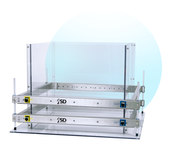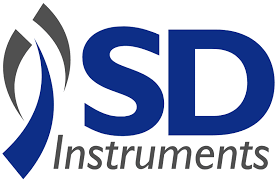Locomotor activity is the motion necessary to get from one place to another. It is closely linked to complex human activities such as learning and motivation, and it is key to avoiding or approaching a stimulus, target, or big-picture goal.
Locomotor activity tendencies of avoiding or seeking are a central component of the human experience, with locomotor activity tests enabling the assessment of spontaneous locomotor activity in rats and mice in order to establish the baseline level of motor activity.

Image Credit: San Diego Instruments, Inc.
Uses of the locomotor activity test
The locomotor activity test is employed in various studies using various research methods. There are several reasons to utilize a locomotor activity test, including:
- Acquiring an improved understanding of the endogenous timing system
- Observing the effect of pharmacological intake on locomotor activity in patients with skeletal muscle diseases
- Determining whether locomotor activity has the potential to function as an index for addictive drugs
- Studying locomotor changes in schizophrenia and other neuropsychiatric conditions
- Measuring the involvement of specific areas in locomotor activity by creating lesions in certain areas
- Measuring the impact of specific genes on locomotor activity by altering test subjects’ genetic makeup
- To study pharmacological treatment and administration by closely observing locomotor activity
- Investigating the impact of drug administration in early stages of development on behavior later in life
San Diego Instruments’ locomotor activity test equipment
San Diego Instruments’ Open Field Maze single enclosure is ideally suited for the locomotor activity test because it can detect animals’ responses to environmental modifications.
This easy-to-use and highly versatile system is regularly used with the company’s video tracking system to measure behaviors in animal subjects. It is also used in locomotor activity tests to offer both the simple and detailed analysis of general locomotor ability.
San Diego Instruments’ PAS-Open Field is a robust solution for applications requiring qualitative analysis of a subject’s locomotor patterns. This reliable and precise locomotor activity test facilitates the most accurate qualitative analysis of rat or mouse open field.
The PAS-Open Field leverages a powerful 16 x 16 photobeam configuration, allowing the use of both a rearing frame and floor pokes. By altering the frame height positioning, locomotor activity test subjects of any size can be accommodated.
Acknowledgments
Produced from materials originally authored by San Diego Instruments.
About San Diego Instruments, Inc.
For more than 30 years, San Diego Instruments has served the scientific community as a comprehensive resource for the design, manufacture and distribution of behavioral neuroscience research instruments used in human and animal studies. Utilized in laboratories and cited in research papers worldwide, SDI systems have come to represent the industry standard for quality and longevity. Our premier SR-LAB™ is the world’s most widely used startle response system. At SDI, our commitment to developing quality products that stand the test of time is matched only our dedication to excellent customer service. We take pride in our ever-growing core of loyal clientele.
SDI behavioral neuroscience research systems afford you the utmost in quality and performance, giving you the edge in an industry where Power, Flexibility and Ease of Use are everything.
Sponsored Content Policy: News-Medical.net publishes articles and related content that may be derived from sources where we have existing commercial relationships, provided such content adds value to the core editorial ethos of News-Medical.Net which is to educate and inform site visitors interested in medical research, science, medical devices and treatments.